Dargahs dedicated to revered Sufi saints are prominent features of India’s topography, serving as spiritual, cultural, and historical sites. These religious spaces, which embody the gentle values of Sufism, have attracted followers from diverse faith backgrounds for many years. The dargahs across India represent not only significant religious monuments but also architectural marvels that highlight the rich Indo-Islamic heritage. Through their inclusive philosophy and serene atmosphere, these shrines foster a sense of community and reverence among visitors, transcending communal boundaries and celebrating the universal principles of love and compassion inherent in Sufism.
Spiritual centers distributed the message of love, peace and human brotherhood across the Indian subcontinent by playing an essential role in their promotion. This exploration investigates notable Sufi shrines throughout India by analyzing their historical development alongside their architectural elements as well as their cultural importance while investigating maintained sacred customs at present day Indian centers of spirituality which serve as active worship centers.
Moinuddin Chishti Dargah (Ajmer Sharif)
The Dargah of Khwaja Moinuddin Chishti, known as Ajmer Sharif, is one of India’s most revered Muslim shrines, located in Ajmer, Rajasthan. The spiritual spot draws countless worshipers from multiple religious traditions throughout the annual year. Khwaja Moinuddin Chishti rests at this sacred site where people remember him as Garib Nawaz (Benefactor of the Poor) because of his exceptional service to poor communities. Through his teachings the shrine became an interfaith harmony symbol because he focused on spreading love and compassionate behavior and tolerating diverse beliefs in India.
Mughal architectural characteristics distinguish the shrine complex which first emerged under Emperor Humayun before subsequent rulers made further additions. Major facets of architectural beauty at this site include Buland Darwaza together with Nizam Gate along with Jama Masjid, Aulia Masjid and Mehfil Khana. The 1532 structure of white marble displays a lotus decoration supported by gold that came from Nawab Haider Ali Khan of Rampur. The building utilizes marble and brick and sandstone materials which showcase the advanced craftsmanship from that historical period.
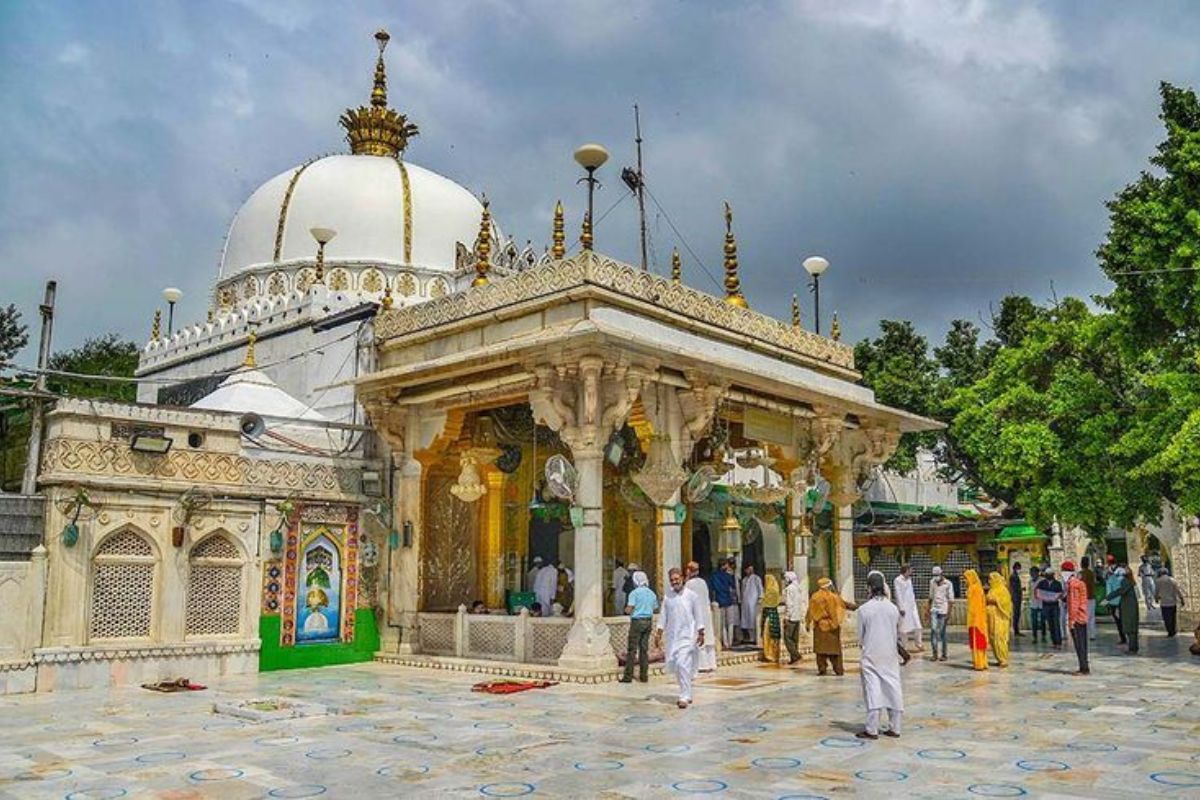
From an architectural standpoint Ajmer Sharif carries a historical value that goes further than its constructed aspects. Death occurred for Moinuddin Chishti in March of 1236 and started a rapid rise in the shrine’s sanctity that turned it into a revered place. Sultan Iltutmish visited the place of honor at Delhi during his 1232 pilgrimage. Royal devotee and Mughal Emperor Akbar walked fourteen times to the shrine while making a barefoot pilgrimage in 1566 to receive blessings about his son. In 1579 he directed the rebuilding activities inside the sanctum of the tomb. Royal patronage of Ajmer Sharif complex through construction and modification initiatives carried on from Jahangir to Shah Jahan.
Hazratbal Shrine(Dargah)
People regard the Hazratbal Shrine as a major religious destination that stands at the peaceful banks of Dal Lake in Srinagar Kashmir India. Exclusive white marble structures at this shrine hold the religious artifact which people consider as Prophet Muhammad’s Sacred Hair. This relic gives the shrine its name, “Hazratbal,” meaning “The Place of the Prophet.” The shrine’s immaculate structure contrasts beautifully with Kashmir’s lush landscape, attracting visitors of all faiths.
The Mughal era brought forth Hazratbal Shrine when it was originally constructed in the 17th century. Basic construction of this building by Mughal subedar Sadiq Khan under the rule of Emperor Shah Jahan introduced Ishrat Jahan as its first name. Ruler Shah Jahan introduced the space as a prayer hall through his transformation of 1634. Thus establishing its religious purpose. The construction plan for this modern facility began in 1968 before it was finished in 1979.
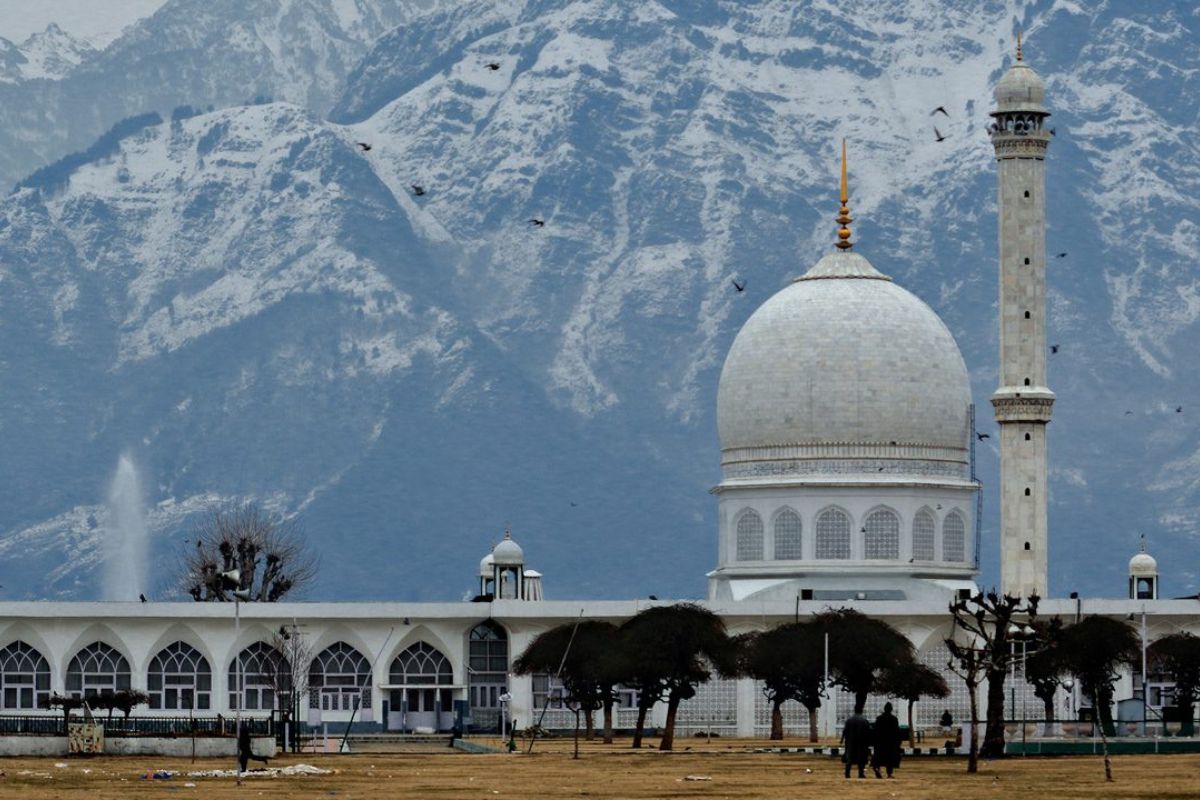
Through Syed Abdullah Madani whose ancestors had descended from the Prophet, the sacred artifact traveled to Kashmir. Following his stay in Medina he found Bijapur as his home starting from 1635. The mortuary relic was inherited by Syed Hameed but he later gave it toKhwaja Nur-ud-Din Eshai a magnanimous Kashmiri as Mughal forces removed his estates. Inayat Begum established the shrine which eventually became known as the revered Hazratbal complex after she inherited it from her father.
The shrine stands as a sacred sanctuary that serves as both spiritual refuge and cultural tribute to Kashmir’s blended religious traditions during the many periods of Kashmir’s political and social disturbances.
Hazrat Nizamuddin Dargah
The Dargah of Hazrat Nizamuddin Auliya in Delhi is one of India’s most revered Sufi shrines, honoring the life and teachings of the 13th-century Sufi saint Khwaja Syed Muhammad Nizamuddin Auliya. The prominent Muslim saint entered this world in 1238 before establishing himself as a leader of the Chishti Order with two major titles Sultan-ul-Mashaikh and Mahbub-e-Ilahi. Hazrat Nizamuddin Auliya belonged to the same spiritual descent through which other major saints of the Chishti Order operated such as Fariduddin Ganjshakar and Moinuddin Chishti.
Constructed in 1526, the dargah complex embodies the essence of Sufi tradition, welcoming devotees from diverse backgrounds. The cultural tradition of Sufi Langar meals operates every Thursday and Sunday at the venue for free community food distribution. The evenings at the dargah are particularly enchanting, featuring Sufi and Qawwali music sessions on Thursdays and Saturdays, allowing visitors to immerse themselves in the sacred atmosphere.
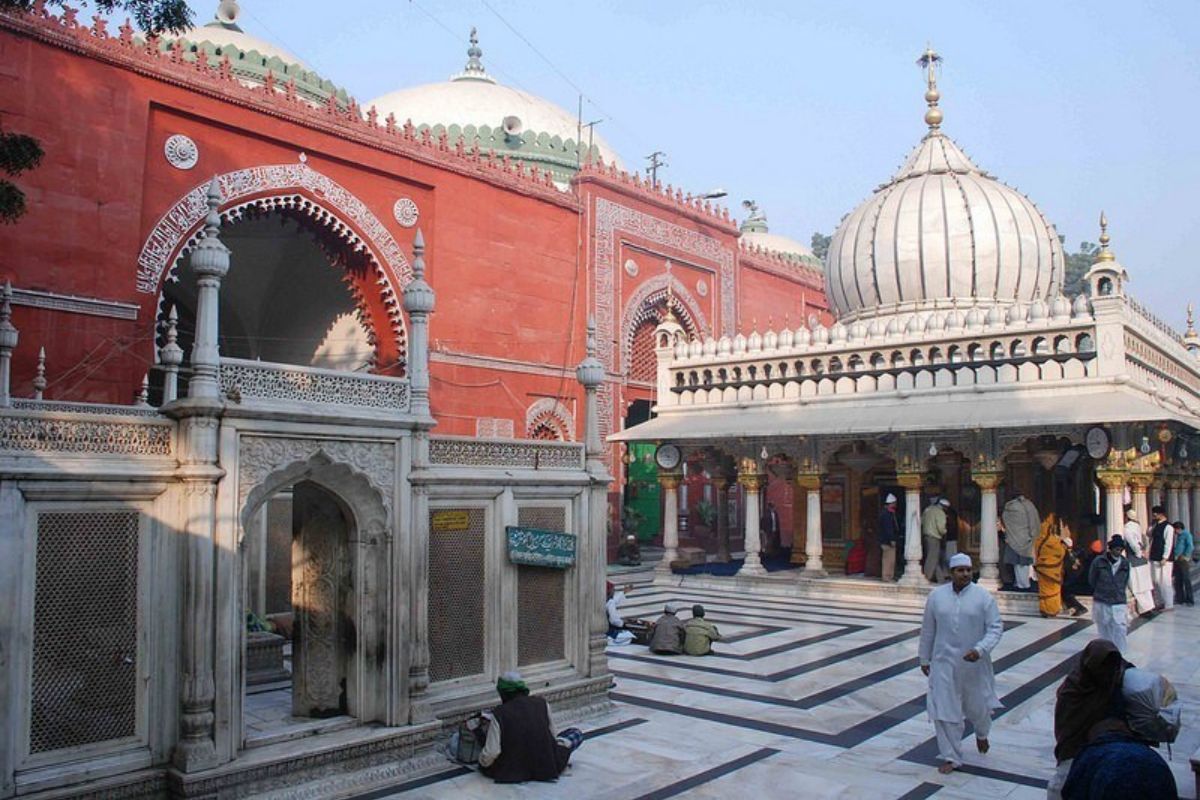
Through his teachings Nizamuddin Auliya showed people how love provides the way to discover God and how this love should extend to all human beings. He made a remarkable contribution to the Muslim community of Delhi by spreading mystical beliefs and encouraging daily worship so people could detach themselves from material goals. Human experiences of spirituality surpassed language barriers according to his teachings about Sufism since he valued practical application more than abstract discussions. Through his welcoming behavior Nizamuddin Auliya built a spiritual community of diverse members that united different social groups. The dargah also houses the graves of notable figures, including Mughal princess Jahan Ara Begum and the celebrated poet Amir Khusro, who was a devoted disciple of Nizamuddin.
Salim Chishti Dargah
The Dargah of Sheikh Salim Chishti, located within the imperial complex of Fatehpur Sikri near Agra, is a stunning example of Mughal architectural brilliance. Between 1580 and 1581 Emperor Akbar ordered the construction of this magnificent marble mausoleum which exists to honor Sufi saint Sheikh Salim Chishti who had a strong influence on the emperor throughout his life. During the period from 1478 until 1572 the third in line of Baba Farid’s lineage Sheikh Salim Chishti adjusted an ascetic lifestyle in a Sikri ridge cave. The shrine’s construction coincided with Akbar’s establishment of Fatehpur Sikri as his capital, symbolizing the connection between spiritual guidance and imperial power during the Mughal era. The UNESCO World Heritage List included the tomb to honor its cultural and historical importance during 1986.

The dargah’s fame is rooted in the spiritual bond between Sheikh Salim Chishti and Emperor Akbar. Historical accounts suggest that Akbar met the saint before the birth of his son, Jahangir, who was named “Salim” in honor of the saint after a prophecy about his birth was fulfilled. The divine link established at this place made it a prominent location for parents seeking child blessings.
The tomb follows Indo-Islamic architectural design that includes a raised position connected through five steps which lead to an entrance portico. A semi-circular dome covers the main tomb which sits at the center beneath intricate marble screens (jalis). The workmanship of this complex features fragile decorations which create a snowy effect on the building while its black and yellow marble decorations show Islamic design influences. A protective wooden structure with mother-of-pearl inlays covers the inner area of the cenotaph inside its ebony enclosure which stands underneath a canopy that has a green cloth draping its surface.
Maner Sharif Dargah
The Maner Sharif Dargah, located in Bihar’s Patna district, is one of eastern India’s most significant Sufi shrines, dedicated to the memory of Makhdum Daulat, a revered Sufi saint, scholar, and poet. Devotees and people from all parts of India and international visitors make their way to this spiritual center to experience Bihar’s prosperous spiritual heritage. Found 30 kilometers from Patna this sanctuary stands as both a sanctuary and architectural masterpiece which unites various medieval Islamic eastern Indian design elements into a single structure.
Maner Sharif remains Indian history’s oldest Sufi educational establishment dating from the 14th century. The foundation of the town occurred when Afghan ruler Sher Shah Suri established its administrative systems through historical documentation. During Mughal times the site became a superior Islamic learning center where scholars and poets along with spiritual seekers visited from various regions across the subcontinent. During this period eastern India obtained substantial benefits in terms of intellectual and cultural advancement.
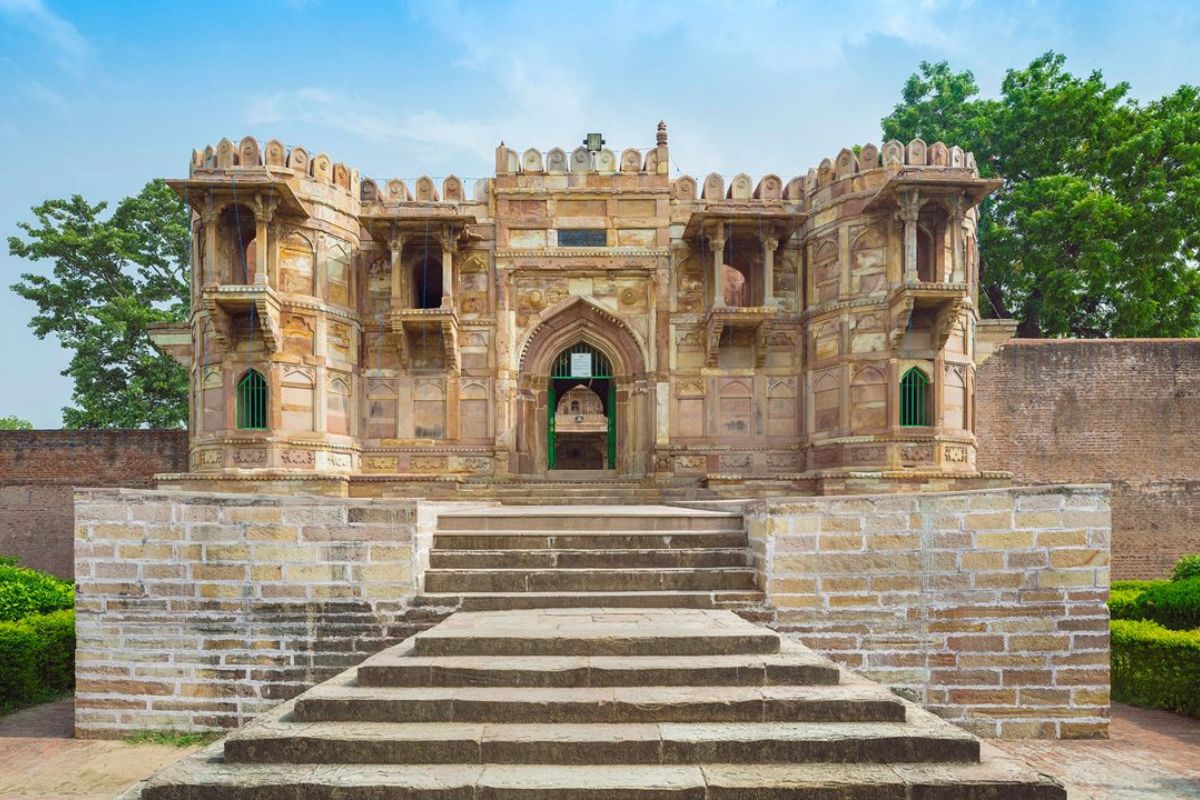
At the heart of Maner Sharif’s significance is the dargah complex, the final resting place of Makhdum Daulat. His revelatory spiritual wisdom written through poetry keeps inspiring devotion in believers who come from all generations. The tomb displays Mughal aesthetic grandeur through its elaborate carvings that embellish the walls with intricate decorations. Religious pilgrims of different backgrounds visit the site throughout the year to obtain blessings together with spiritual tranquility. The openhearted environment at Maner Sharif demonstrates the Sufi approach to universal acceptance of humanity by disregarding religious differences thus establishing itself as a critical heritage site and tourism center for Bihar.
Shrine of Baba Farid
The Shrine of Baba Farid stands as a prominent Sufi shrine of the 13th century that honors Baba Farid – also known as Fariduddin Masud Ganjshakar and the Punjabi mystic poet – at his homeplace in Pakpattan, Punjab, Pakistan. After the partition of the Indian subcontinent in 1947 the shrine maintained its cultural importance to the region because it kept influencing Sufi customs between India and Pakistan. Through his leadership Baba Farid played a major role in advancing Punjabi language growth and literature creation while his accessible poetic compositions express spiritual wisdom and draw in millions who belong to different religious beliefs.
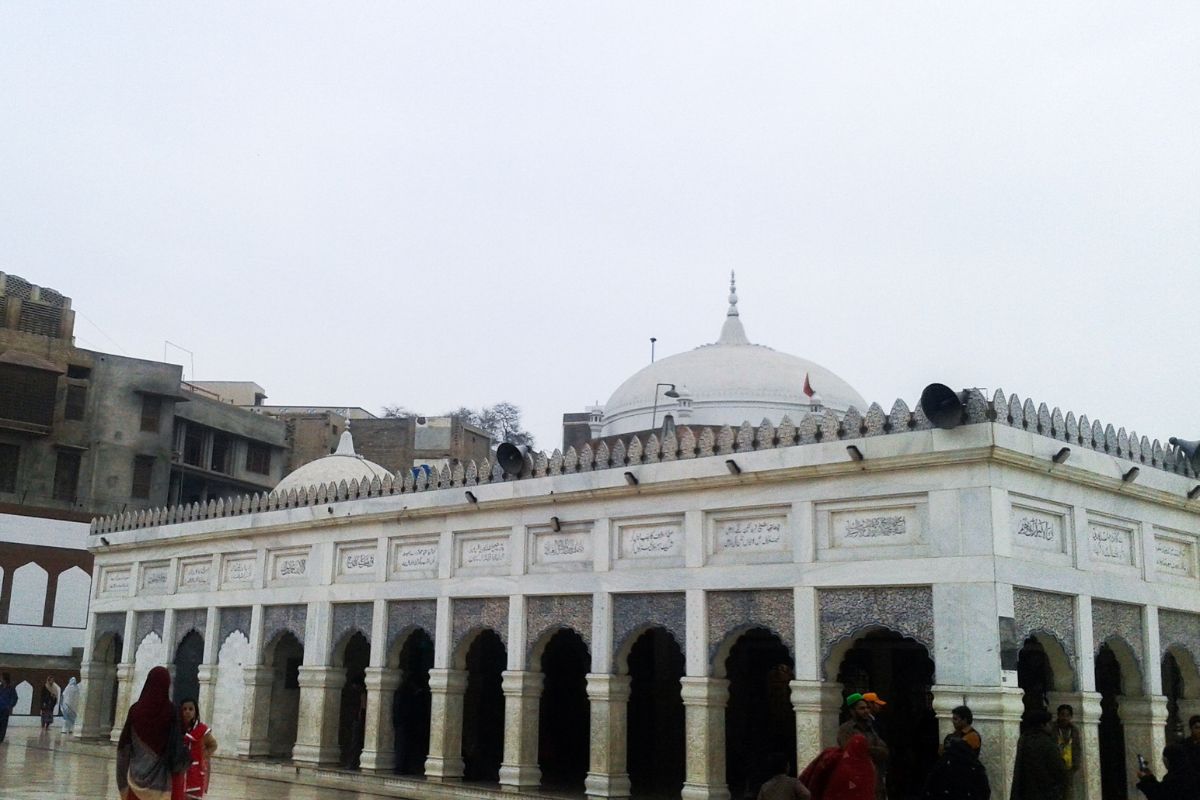
Throughout the subcontinent this shrine stands as one of the earliest Sufi sites while illustrating old architectural styles that would be replaced by the progressive Indo-Islamic designs later on. Islamic architectural elements started being assimilated into the South Asian context at this time which shaped future religious constructions. The shrine has evolved into a permanent center which advances Sufi teachings and musical traditions and charitable operations and embodies Sufi values of unconditional love and compassion and humanitarian service to all people irrespective of religion and social position. The shrine serves as an emblem of religious unity by embracing all faiths because of its inclusive approach that emerged through the challenging political times of the region.
The influence of Baba Farid continues through the Chishti Sufi order because it connects him to both Nizamuddin Auliya and Salim Chishti. His sacred verse appears in the Guru Granth Sahib which demonstrates the regard that Sikh Gurus had for his religious insights. According to this finding Baba Farid functions at a universal level by communicating with spiritual aspirations shared by people across cultures.
Conclusion: The Enduring Legacy of Sufi Shrines in India
The religious buildings known as Sufi shrines in India amount to much more than architectural history because they represent a dynamic spiritual practice that has strongly shaped Indian cultural traditions together with social interactions during many centuries. The dargahs of esteemed saints like Moinuddin Chishti, Nizamuddin Auliya, and Salim Chishti symbolize religious harmony, spiritual enlightenment, and humanitarian service in modern India. Sufism’s inclusive philosophy, emphasizing divine love and compassion over rigid dogma, resonates with India’s pluralistic ethos, allowing these shrines to transcend communal boundaries. These sites serve as common sanctuaries for followers of various religions such as Hindus Muslims Christians Sikhs and others who honor universal spiritual principles.
These shrines exhibit architectural excellence which illuminates the cultural interaction that gives shape to Indian civilization. The harmonious blend of Islamic, Hindu, Persian, and indigenous design elements showcases the creative interactions among diverse traditions. Each shrine starting from the pure white marble tomb of Salim Chishti features distinctive visual elements yet maintains its connection to the overall Indo-Islamic artistic tradition. The architectural heritage requires scholarly focus and preservation because it stands as a core part of Indian culture which attracts artists coupled with architects together with spiritual seekers from around the world.
The existing Sufi shrines from ancient times in India show how sacred spiritual values can create authentic interpersonal connections while uniting societies during our current twenty-first century. The long-lasting attractiveness of these accommodating sacred places provides valuable evidence that India’s interfaith traditions will continue to thrive despite rising religious conflicts in modern times. The qawwali music, shared meals for pilgrims, and daily moments of prayer within these dargahs exemplify the living reality of interfaith harmony. These Sufi shrines in India manifest a glorious history while leading the way toward a better present and future that can be built upon the spiritual vision of their honored saints.
Also Read: The Diverse and Unique Art Forms of Bengal
You can connect with DNN24 on Facebook, Twitter, and Instagram and subscribe to our YouTube channel.

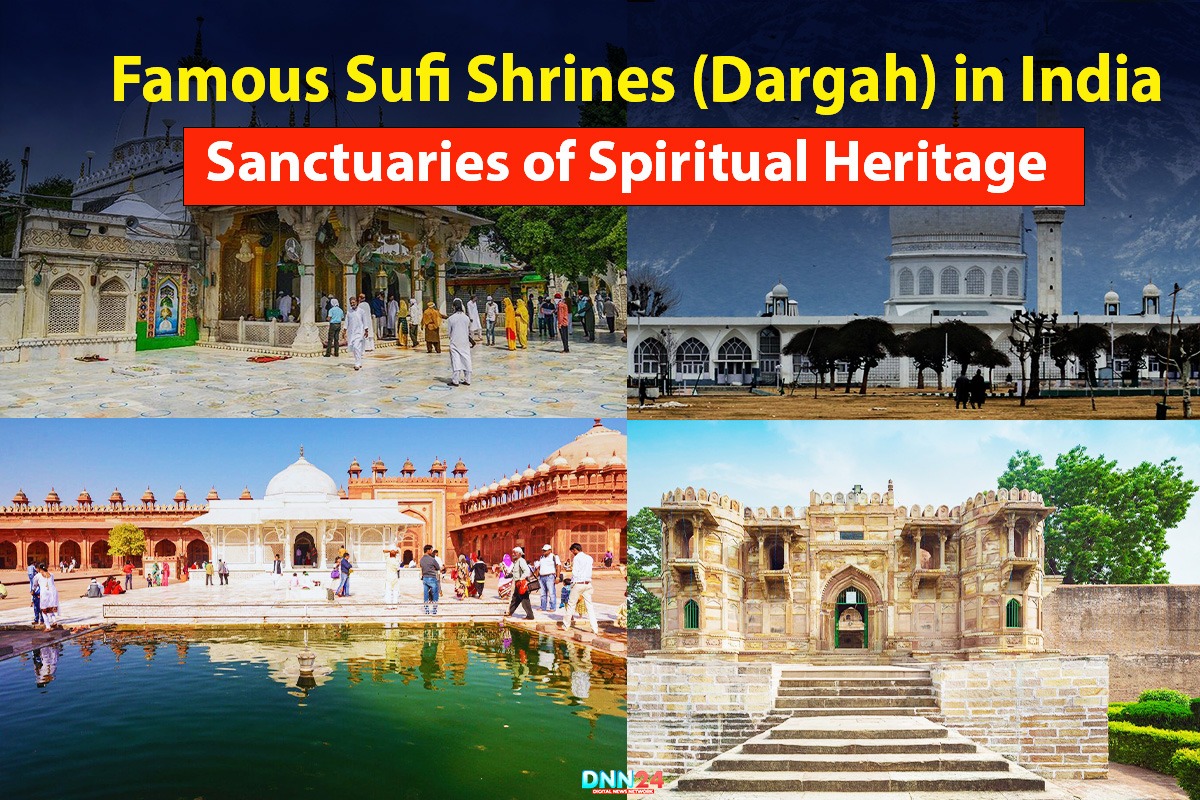
Hii